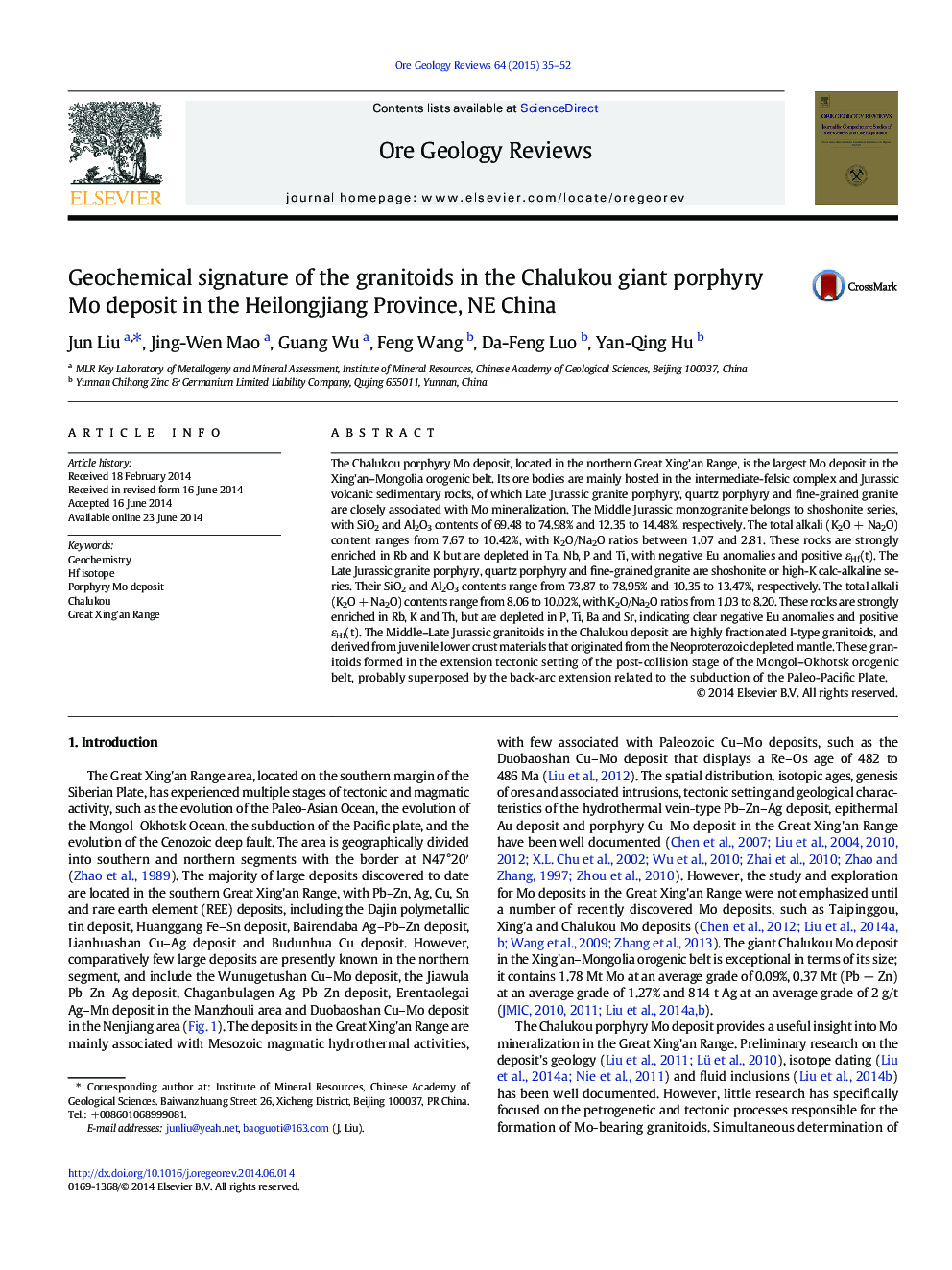| Article ID | Journal | Published Year | Pages | File Type |
|---|---|---|---|---|
| 4697094 | Ore Geology Reviews | 2015 | 18 Pages |
The Chalukou porphyry Mo deposit, located in the northern Great Xing'an Range, is the largest Mo deposit in the Xing'an–Mongolia orogenic belt. Its ore bodies are mainly hosted in the intermediate-felsic complex and Jurassic volcanic sedimentary rocks, of which Late Jurassic granite porphyry, quartz porphyry and fine-grained granite are closely associated with Mo mineralization. The Middle Jurassic monzogranite belongs to shoshonite series, with SiO2 and Al2O3 contents of 69.48 to 74.98% and 12.35 to 14.48%, respectively. The total alkali (K2O + Na2O) content ranges from 7.67 to 10.42%, with K2O/Na2O ratios between 1.07 and 2.81. These rocks are strongly enriched in Rb and K but are depleted in Ta, Nb, P and Ti, with negative Eu anomalies and positive εHf(t). The Late Jurassic granite porphyry, quartz porphyry and fine-grained granite are shoshonite or high-K calc-alkaline series. Their SiO2 and Al2O3 contents range from 73.87 to 78.95% and 10.35 to 13.47%, respectively. The total alkali (K2O + Na2O) contents range from 8.06 to 10.02%, with K2O/Na2O ratios from 1.03 to 8.20. These rocks are strongly enriched in Rb, K and Th, but are depleted in P, Ti, Ba and Sr, indicating clear negative Eu anomalies and positive εHf(t). The Middle–Late Jurassic granitoids in the Chalukou deposit are highly fractionated I-type granitoids, and derived from juvenile lower crust materials that originated from the Neoproterozoic depleted mantle. These granitoids formed in the extension tectonic setting of the post-collision stage of the Mongol–Okhotsk orogenic belt, probably superposed by the back-arc extension related to the subduction of the Paleo-Pacific Plate.
